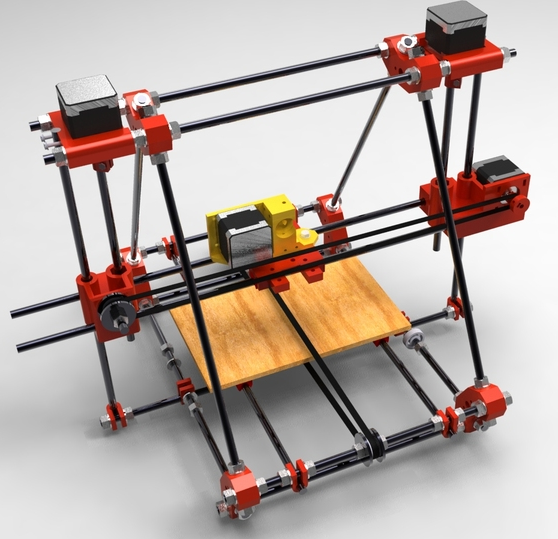Mechanical Rigidity/Mendel
Mendel (Early Prusa) inadequate design characteristics
The very early Mendels (some of which are still copied and sold, particularly in China) are classic examples of significantly non-rigid design. Here is a photo:
- Firstly: the base. The base is a rectangle, having no diagonal bracing. This makes it possible for the entire base to be deformed into a parallelogram shape.
- Second: the left and right sides are triangles, but they have been truncated at the top. That leads to "twisting" on the plastic parts.
- Third: the front and back faces (this is a toblerone-style frame) are again rectangles, with absolutely no diagonal bracing. The entire uprights can therefore wobble side-to-side, which will happen as the X-carriage moves.
- Fourth: the base relies on gravity to keep it down. Lifting one corner will result in the entire frame twisting. This design is particularly bad as one corner may be lifted a whopping 10mm (1cm) off the ground!
Although it is historically a classic and iconic design, the original Mendel has a huge number of design flaws. It was an interesting learning experience for everyone.
